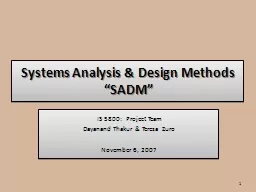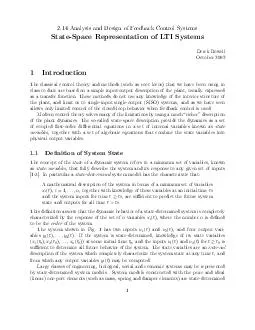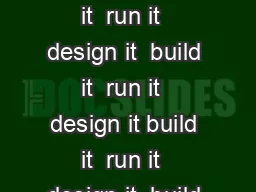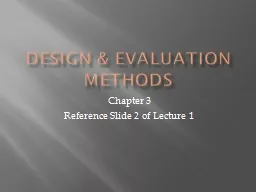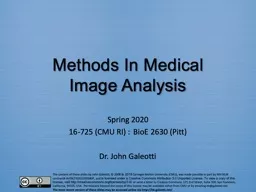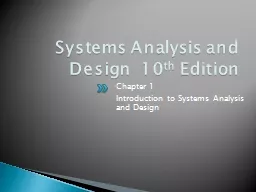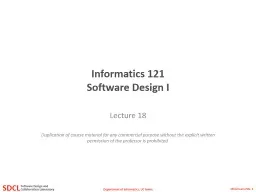PPT-Systems Analysis & Design Methods
Author : alida-meadow | Published Date : 2016-05-30
SADM IS 5800 Project Team Dayanand Thakur amp Teresa Zuro November 6 2007 1 Overall Objective What is Systems Development Methodology Why is it important What
Presentation Embed Code
Download Presentation
Download Presentation The PPT/PDF document "Systems Analysis & Design Methods" is the property of its rightful owner. Permission is granted to download and print the materials on this website for personal, non-commercial use only, and to display it on your personal computer provided you do not modify the materials and that you retain all copyright notices contained in the materials. By downloading content from our website, you accept the terms of this agreement.
Systems Analysis & Design Methods: Transcript
Download Rules Of Document
"Systems Analysis & Design Methods"The content belongs to its owner. You may download and print it for personal use, without modification, and keep all copyright notices. By downloading, you agree to these terms.
Related Documents

